 |
|
At The Picture Show
|
July 2011
With great power comes great . . . eh, forget it
The Summer of Disappointing Superheroes continues with the lazy, thoughtless 'Green Lantern'
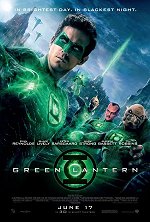
Green Lantern
Warner Bros. Pictures
Director: Martin Campbell
Screenplay: Greg Berlanti, Michael Green, Marc Guggenheim and Michael Goldenberg
Starring: Ryan Reynolds, Blake Lively, Peter Sarsgaard, Mark Strong, Angela Bassett, Taika
Waititi and Tim Robbins; and the voices of Geoffrey Rush and Michael Clarke Duncan
Rated PG-13 / 1 hour, 45 minutes

 (out of four)
(out of four)
Green Lantern is one giant, two-hour excuse for itself. If anyone involved had taken the time to
think anything through, the movie simply would not exist. Not in this form, anyway.
Earlier this year there was a movie called Rubber, which began with a fourth wall-breaking
monologue discussing the tendency of plot details to exist for their own sake. The element of "no
reason," it's called. The critique is satirical - one hilarious example: "In Oliver Stone's JFK,
why is the president suddenly assassinated by a complete stranger? No reason." - but the
argument could be legitimately applied to Green Lantern.
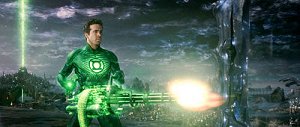 Why does the ring choose Hal Jordan to join the Green
Lantern Corps, a heroic group of intergalactic space cops? No reason. Why does the giant fear-sucking mass named Parallax (I would call him the Smoke Monster, which is a fitting visual
description, but I think that moniker's taken) take a random detour from his objective just to try
and help destroy Earth? No reason. Why does Earth matter at all, when by the film's own
admission, it is only one of countless life-supporting planets - and not even one of the more
advanced or important of those? No reason.
Why does the ring choose Hal Jordan to join the Green
Lantern Corps, a heroic group of intergalactic space cops? No reason. Why does the giant fear-sucking mass named Parallax (I would call him the Smoke Monster, which is a fitting visual
description, but I think that moniker's taken) take a random detour from his objective just to try
and help destroy Earth? No reason. Why does Earth matter at all, when by the film's own
admission, it is only one of countless life-supporting planets - and not even one of the more
advanced or important of those? No reason.
Why does the film require Hal Jordan to wear a tiny green facemask - for concealment of
identity, we are told - when everyone can plainly see it's Hal Jordan underneath that thing? Why
is Hal suddenly aware that Earth is on the verge of being destroyed? Why, in a moment
comically reminiscent of both Airplane! and Hot Shots!, does looking at a photograph of his
dead dad - a photograph that is presumably always displayed in Hal's cockpit - suddenly launch
Hal into a nervous breakdown? Why are the Guardians of the Universe so passive-aggressive?
Why does the hidden scene during the credits even happen? Why is Angela Bassett slumming it
in this movie?
The answer to all of the above . . . no reason.
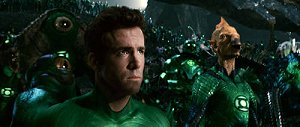 Yes yes, I know, technically the film has its "reasons" for
most of those, but they're so flimsy they barely deserve mention. The concrete answer, of course,
is that the almost-nonexistent story requires these things to happen. I find myself making that
observation so often that I realize "plot requirement" and "no reason" are pretty much the same
thing.
Yes yes, I know, technically the film has its "reasons" for
most of those, but they're so flimsy they barely deserve mention. The concrete answer, of course,
is that the almost-nonexistent story requires these things to happen. I find myself making that
observation so often that I realize "plot requirement" and "no reason" are pretty much the same
thing.
But whatever you want to call it, Green Lantern has a lot of it. And all those details and
developments and twists and turns exist in support of absolutely nothing. The movie plays out in
the kind of broad strokes you might present in a pitch meeting.
Filmmaker: OK, so we open up on a giant mass of energy sucking the yellow souls from, like,
some astronauts or something, which allows him to emerge from some sort of captivity. The
yellow mass is the bad guy, you see. It makes a witty remark - yes, it can talk - and takes off to
wreak havoc or something.
Then, we'll have some narration explaining how the two most powerful elements in the world
are will (represented by the color green) and fear (represented by yellow). A long time ago, the
Guardians of the Universe learned how to harness both powers, and used the power of will to put
together the Corps, which protects the universe from evil through the use of, like, rings and
lanterns. I'm paraphrasing, of course.
Studio Executive: Oh, of course, that's the way we like it. The simpler, the better. You're doing
very well.
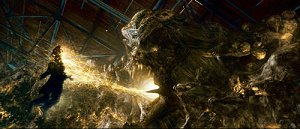
Filmmaker: OK, so then we cut to our hero in bed with
some floozy and then frantically rushing off to his job - he missed his alarm, that silly goose! -
as a wisecracking test pilot who plays by his own rules. He's kind of like Maverick from Top
Gun.
Studio Executive: That's the greatest movie of all-time!
Filmmaker: Duh, I know that already! So anyway: Hal sees a photo of his dad - he died years
ago in a fiery plane explosion, you see - then freaks out, almost crashes, but survives. Then a
heroic alien named Abin Sur crash-lands on Earth, and the ring chooses Hal as his replacement
in the Corps. And so he goes to the planet Oa to begin his training, then quits because of a reason
I haven't come up with yet.
So then, a lonely, awkward, but brilliant scientist named Hector Hammond does an autopsy on
the alien body, gets accidentally injected with Parallax's DNA, and becomes telekinetic and evil.
Studio Executive: Ooh, what happens next?!
Filmmaker: Well, then there's some fighting. The end.
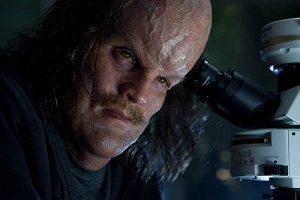 Studio Executive:
Studio Executive:
Sounds like a winner! Here's three-hundred and twenty million dollars. Take a check?
And . . . scene.
That just about sums it up. To be honest, I think the concept of a superhero whose power is being
able to create whatever he sees in his mind's eye is pretty promising, and there's a nice training
scene where Hal gets to test his imagination against Sinestro (Mark Strong), the Green Lanterns'
leader. But the idea goes almost nowhere for the duration of the film.
I must also commend Peter Sarsgaard for his villainous turn as Hammond - he makes the
character as memorable and enjoyable as he possibly can given the laziness of the screenplay.
But he alone is far from enough to make up for a movie that is almost completely devoid of
purpose.
Continued Below Advertisement
Read more by Chris Bellamy